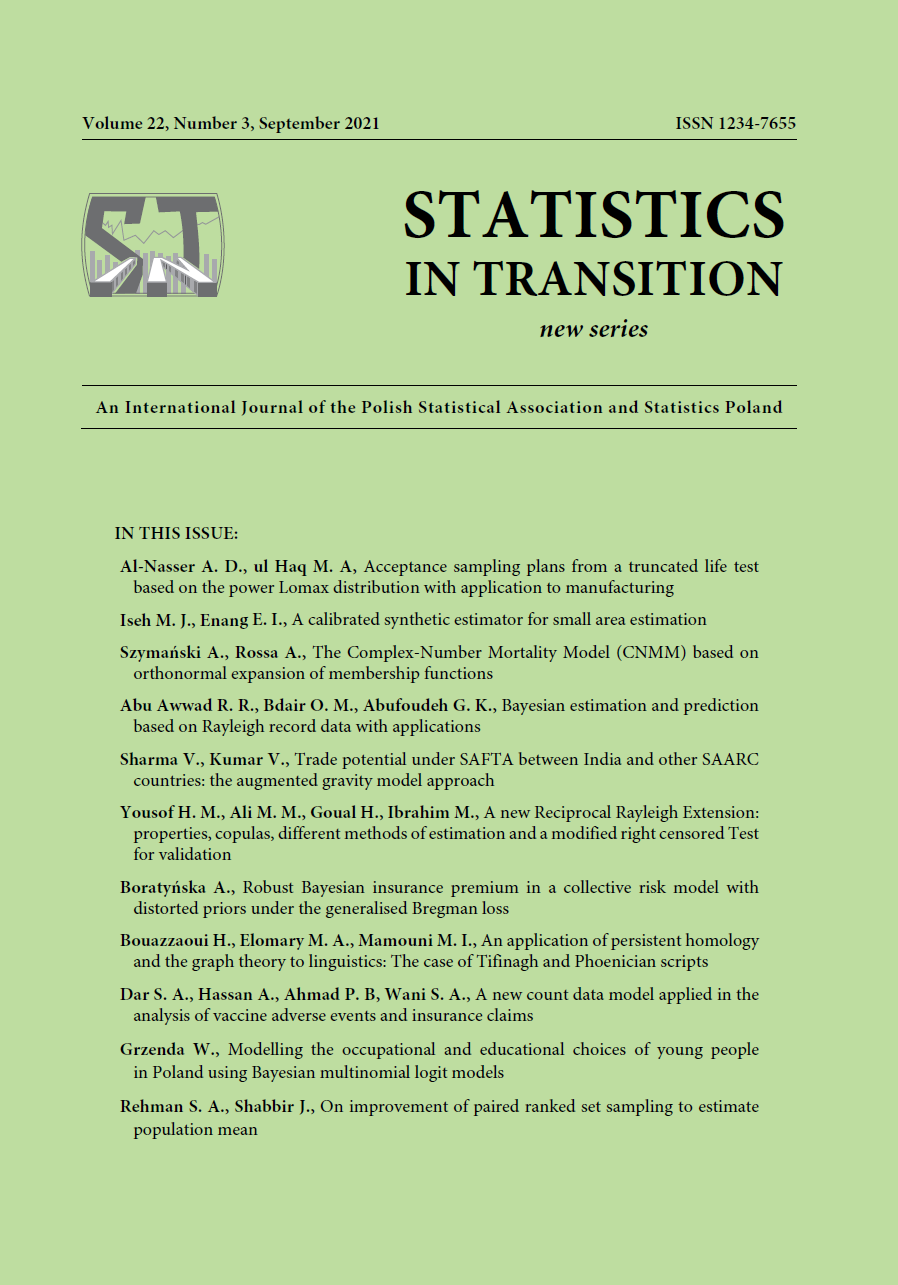ARTICLE
ABSTRACT
As the origin of the Tifinagh script remains uncertain, this work aims at exploring its probable relatedness with the Phoenician script. Using tools from within topological data analysis and graph theory, the similarity between the two scripts is studied. The clustering of their letter shapes is performed based on the pairwise distances between their topological signatures. The ideas presented in this work can be extended to study the similarity between any two writing systems and as such can serve as the first step for linguists to determine the possibly related scripts before conducting further analysis.
KEYWORDS
topological data analysis, persistent homology, graph theory, writing systems, Abjad scripts, Alphabet scripts, Tifinagh script, Phoenician script
REFERENCES
Blanco, J., (2014) . Tifinagh & the the IRCAM, Explorations in Cursiveness and Bicamelarism in the Tifinagh script.Master Of Arts In Typeface Design, University Of Reading.
Briquel-Chatonnet, F., (1997). De l’araméen a l’arabe: quelques réflexions sur la genese de l’écriture arabe. Paris: Bibliotheque Nationale De France.
McMahon, A., McMahon, R., (2011). Language Classification by Numbers. Oxford: Oxford University Press.
Sadouk, L. et al., (2020). Handwritten Phoenician Character Recognition and its Use to Improve Recognition of Handwritten Alphabets with Lack of Annotated Data. International Journal Of Advanced Trends In Computer Science And Engineering.
Fernández, M., Valiente, G, (2001). A graph distance metric combining maximum common subgraph and minimum common supergraph. Pattern Recognition Letters, 22, pp. 753–758.
Zhu, G., Lin, X., Zhu, K., Zhang, W., Xu Yu, J., (2012). TreeSpan: efficiently computing similarity all-matching. Proceedings Of The 2012 ACM SIGMOD International Conference On Management Of DataMay, pp. 529–540.
Gouda, K., Hassan, M., (2016). CSI_GED: An Efficient Approach for Graph Edit Similarity Computation. Proc. Of ICDE’16.
Hatcher, A., (2002). Algebraic Topology, Cambridge University Press.
Spanier, E., (1966). Algebraic Topology, McGraw-Hill Inc.
Edelsbrunner, H., Harer, J., (2010). Computational Topology. An Introduction, Amer. Math. Soc., Providence, Rhode Island.
Ghrist, R., (2008). Barcodes: the persistent topology of data.Bulletin Of The American Mathematical Society, 45, pp. 61–75.
Gunnar, C., De Silva, V., Morozov, D., (2009). Zigzag persistent homology and real-valued functions.Proceedings Of The Twenty-fifth Annual Symposium On Computational Geometry (SCG ’09), pp. 247–256.
Milosavljevi´c, N., Morozov, D., Skraba, P., (2011). Zigzag persistent homology in matrix multiplication time. Proceedings Of The Twenty-seventh Annual Symposium On Computational Geometry (SoCG ’11). Association For Computing Machinery, New York, NY, USA, pp. 216–225.
Carlsson, G., De Silva, V., (2010). Zigzag persistence. Found Comput Math 10, pp. 367– 405.
Floyd, R., (1962). Algorithm 97: Shortest Path. Communications Of The ACM, 5, p.345.
Hagberg, A., Swart, P., S Chult, D., (2008). Exploring network structure, dynamics, and function using NetworkX. Proceedings Of The 7th Python In Science Conference (SciPy2008), Gäel Varoquaux, Travis Vaught, And Jarrod Millman (Eds), Pasadena, CA USA, 5, pp. 11–15.
Morozov, D., (2012). Dionysus. http://www.mrzv.org/software/dionysus/ Coulmas, F., (2008). Typology of Writing Systems. Band 2, pp. 1380–1387. Available at: https://doi.org/10.1515/9783110147445.2.9.1380
Gelb, I., (1963). A Study of Writing, Chicago University Press, 2nd edition.
Hill, A., (1967). The typology of writing systems. Papers In Linguistics, pp. 92–99.
Horak, D., Maleti´c, S., Rajkovi´c, M., (2009). Persistent homology of complex networks. J. Stat. Mech. Theory And Experiment, pp. 30–34.
Pulgram, E., (1976). The typologies of writing-systems, Mont Follick Series.
Pichler, W., (2007). The origin of the Libyco-Berber script. Actes Du Colloque International, Le Libyco-berbére Ou Le Tifinagh: De L’authenticité A L’usage Pratique, pp. 187–200.
Sampson, G., (1985).Writing Systems: A Linguistic Introduction, Hutchinson & Co. Ltd, London.
Slaouti Taklit, M. (2004). L’alphabet Latin serait-il d’origine berbére?, Harmattan, Paris.
Unger, J., DeFrancis, J. (1995). Logographic and Semasiographic Writing Systems: A Critique of Sampson’s Classification. Scripts And Literacy. Neuropsychology And Cognition, 7, pp. 44–58.
Nanda, V., (2017). Perseus: The Persistent Homology Software. Available at: http: //people.maths.ox.ac.uk/nanda/perseus/
Zhu, X., (2013). Persistent homology: An introduction and a new text representation for natural language processing. Proceedings Of The Twenty-Third International Joint Conference On Artificial Intelligence.
